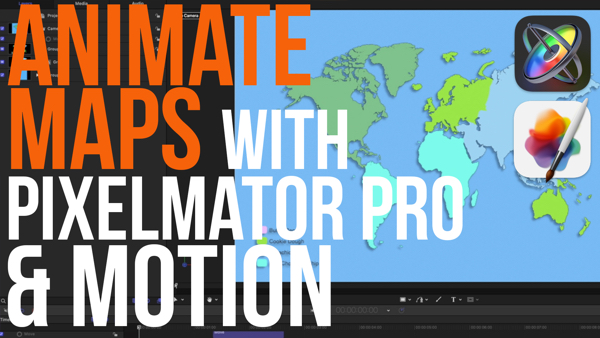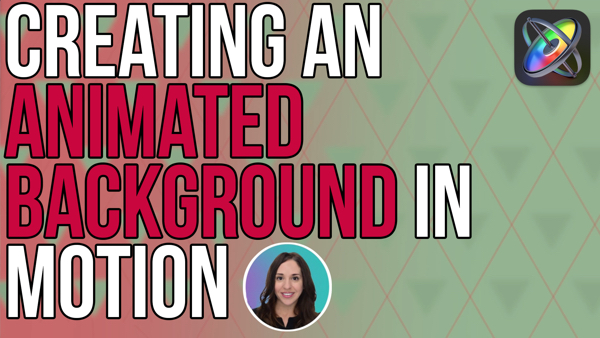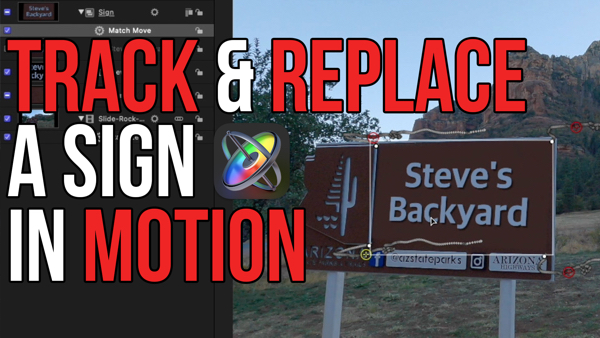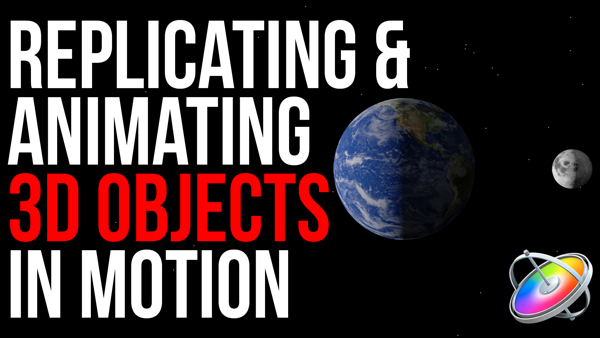How to Create Swinging Text in Motion 5
In “Under 5 Minutes” Mark Spencer will teach you how create a swinging text effect often seen in kinetic typography treatments.
Using 3 text layers you’ll learn how to change the anchor point then apply and control an oscillate behavior. You’ll then use keyframes to refine the animation and offset the layer timing to achieve this popular kinetic typography style.
In this episode, I’ll show you how to create this swinging text effect. I’m Mark Spencer from RippleTraining.com. Welcome to Motion Magic, where you’ll learn visual effects and motion graphics in Under 5 Minutes. Here I am in Motion. I have a group named “Background” which contains a gradient generator, a moon graphic and a particle emitter of bats, all found in Motion’s library. I’ll close this group and turn it off for now. I’ll also move the playhead back to the start of the project. I’ll select the text group, press T for the Text Tool, click in the canvas and type pumpkin. In the heads up display, I’ll choose a font, center align the text, change it’s size and change the color. In the properties inspector, I’ll reset the transform parameters to center the text, then drag in position Y to move it up. Now here is a key step. I’ll right click in the canvas, select the anchor point tool and move the anchor point to the top of the text line. Then I’ll switch back to the transform tool. In the properties inspector, if I open rotation, and drag in the x value field, the text rotates from this new anchor point position, creating the swinging effect. I’ll undo that change. To animate the text, I’ll use the menu next to rotation x, and select Add Parameter behavior oscillate. The behavior appears below the text layer in the layers list and it’s parameters appear in the heads up display in the inspectors behavior. If I play the project, the text rotates back and forth by 100 degrees, but much too slowly. I’ll increase the speed to 100, that’s better. If I step through the first few frames, the text starts already in it’s final position, so to fix that, I’ll move the playhead home and drag left in the start offset value field with the option key held down to make smaller changes until the text is beginning to travel downward. I’ll then use the behaviors short cut menu to add a fade in/fade out behavior. I’ll set the fade in to 6 frames and the fade out to zero. If I play, the text now fades in nicely but it keeps swinging. To make the oscillation slow to a stop, I’ll move the playhead home, then in the behaviors inspector, I’ll set a key frame for amplitude, then I’ll double click the dashboard, type one period to move forward on second and drag the amplitude slider to zero which will automatically set a second key frame. If I play that now, we have a nice swinging animation that comes to a stop. I’ll press F6 to open the timing pane and make sure show keyframes is enabled. Now I’ll adjust the overall timing of the animation by dragging the second keyframe and I’ll adjust the speed of the initial swing. If I want more precise control, I can press Command 8 to open the keyframe editor, drag the slider to zoom in and then Command drag bezier handles to adjust how the oscillation attenuates which is represented by this curved yellow line behind the key frame graph. Ok, I’ll press Command 8 to close that and zoom back out a bit. To make the other lines of text, all I need to do is select this one, option drag it down in the canvas to make a copy, adding the shift key so it doesn’t move left or right, double click and change the text, press ESC, drag the bounding box handles to resize to match the top one. By the way, holding down the option key keeps the text centered. And change the color in the heads up display. In the timeline, I’ll slide this layer right to start a little after the first layer. Let’s play that. I’ll slow the second one down a little. Great. Now I’ll duplicate the second layer, rename it Latte, change it’s size and color and move it down in the timeline. I’ll play that back and adjust the timing. The starting amplitude of the keyframe value and the duration of the animation to make it look just the way I want. Then I’ll re-enable the background group, select the text group itself and reposition and scale the text group, deselect everything and play that back. Click the subscribe button below. If you have an idea, comment or suggestion, leave those below as well. Go to rippletraining.com for fast professional training on Final Cut Pro, Motion and DaVinci Resolve from industry professionals.




